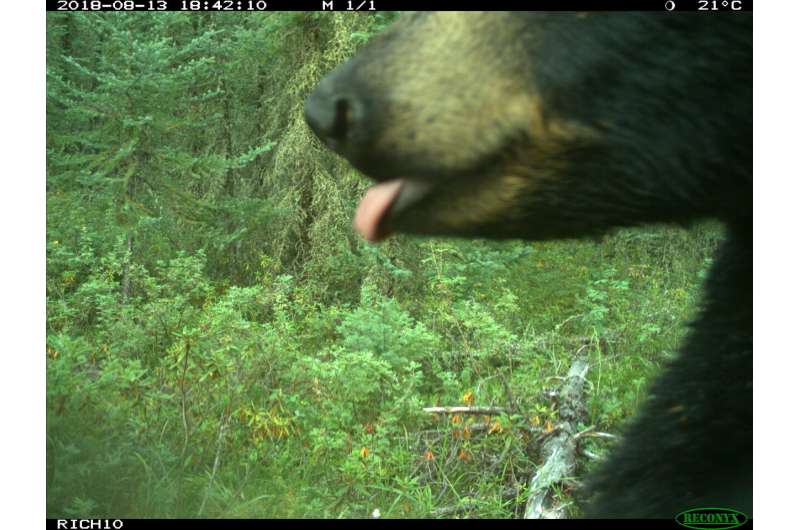Data from thousands of cameras confirms protected areas promote mammal diversity

A new University of British Columbia study offers new evidence that protected areas are effective at conserving wildlife.
Researchers at UBC's faculty of forestry analyzed data from a global data set drawing from 8,671 camera trap stations spanning four continents. They found more mammal diversity in survey areas where habitat had a protected designation—compared to forests and other wilderness areas that lacked that designation.
This was true even when these protected areas experienced human disturbances such as recreational use and logging.
"This is not shocking news in itself, but it is exciting evidence of the critical role that parks and nature reserves play in wildlife conservation," says Dr. Cole Burton, the study's senior author and a conservation biologist who researches mammal populations and human-wildlife coexistence.
"As international discussions continue on new global targets for expanding protected areas, it's important to be able to measure the benefits of the protections that do currently exist."
This is the largest number of wildlife cameras ever analyzed in a single study, notes first author Cheng Chen, a forestry Ph.D. student who relied on two international wildlife camera databases for his analysis.
"By drawing on such a wide dataset, we were able to synthesize 91 camera trap surveys from 23 countries to come up with a global picture of the effect of protected areas on mammal diversity," said Chen.
The study analyzed for the presence of a wide range of mammal species, from caribou in Canada to leopard cat in China.
Protected areas are the final strongholds of many endangered mammals, notes Burton, adding that mammals are a particularly challenging group to protect because they require large areas for habitat, and so tend to come into conflict with people.
"If we want to keep larger mammals around, along with the critical roles they play in ecosystems, we need to continue focusing on the growth of the protected area network," said Burton. "In fact, under the Convention on Biological Diversity, the world is currently discussing new targets for how much of the earth's surface should be covered by parks. We need to have better information to inform these policy discussions. Hopefully this study helps fill the gaps in our knowledge."
An international team of collaborators contributed to the research, published this week in Conservation Letters.
More information: Cheng Chen et al, Global camera trap synthesis highlights the importance of protected areas in maintaining mammal diversity, Conservation Letters (2022).
Journal information: Conservation Letters
Provided by University of British Columbia





















